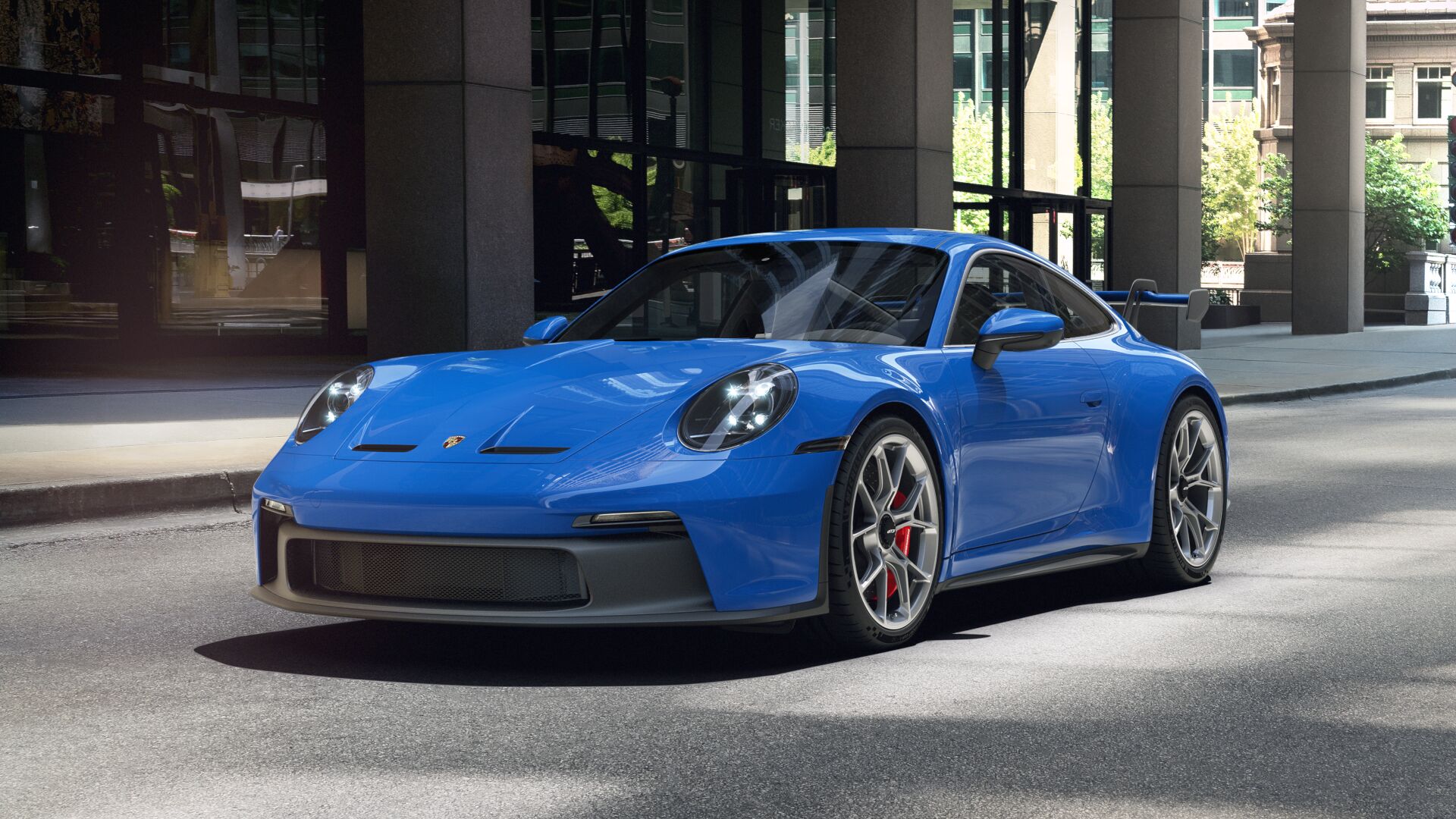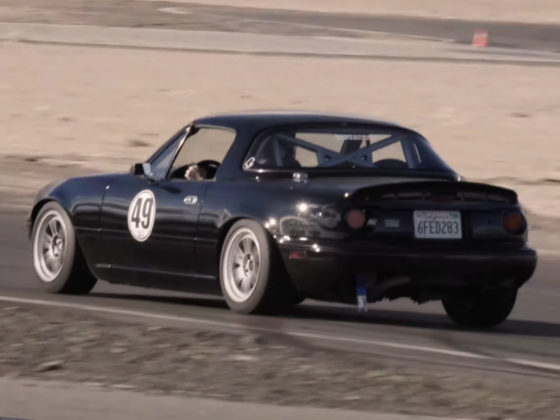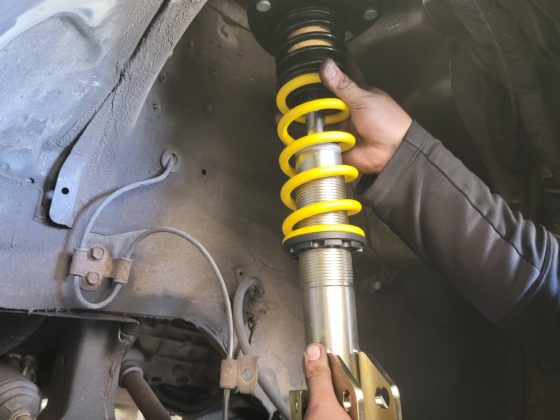 Porsche is a very conservative company, much of the Porsche development on legacy models like the 911 is incremental. Even the latest models have cues dating back to the original. As engineers, we have always wondered why Porsche has insisted on using McPherson strut front suspension for all of these years. Strut suspension has dated back to the original 901 series 911 over 50 years ago. When the original 911 was designed, it was a small car that had much narrower tires and we can see how a simple lightweight suspension was seen as an advantage.
Porsche is a very conservative company, much of the Porsche development on legacy models like the 911 is incremental. Even the latest models have cues dating back to the original. As engineers, we have always wondered why Porsche has insisted on using McPherson strut front suspension for all of these years. Strut suspension has dated back to the original 901 series 911 over 50 years ago. When the original 911 was designed, it was a small car that had much narrower tires and we can see how a simple lightweight suspension was seen as an advantage.
With a heavy rear weight bias, the 911 struts had a lot of positive caster for a better steering feel for the lightly loaded front tires. There was also quite a bit of steering axis inclination to improve straight-ahead stability. The wheel tilt caused by this geometry was not an issue for the narrow, high profile, soft sidewall tires of the time, in fact, it probably helped plant these sorts of tires better. 50 years later the 991 911 still had McPherson struts with similar geometry even though the tires had completely changed. Modern tires have very low profiles, are very wide, and have very stiff sidewalls. Due to the fact that a McPherson strut goes from the knuckle to the top of the shock tower and the suspension pivots about this line, it does not lend itself to modern super-wide tires as you cannot control the scrub radius without excess steering axis inclination and tilting the tire to the sides of its contact patch at high steering angles. McPherson struts also do not gain much negative camber and can even lose negative camber under body roll. None of this goes along with what modern tires want.
So the seventh-gen 911, the 991 (2011-2020) still had McPherson struts and old legacy suspension geometry in the front of the car. Like the 911s of old, the tire contact patch would lift and tilt and the corner weights would jack. This is part of what caused the infamous 911 inside front tire lift in cornering. However, Porsche has always been the company that can do everything wrong with a design and still make it work excellently. Old Porsche wagons built before the internal combustion engine probably put the horse in the back. We have a 991 GT3 project car and we can tell you that this car is amazing on the track, well balanced, and little understeer. It is one of the best handling cars we have yet to experience. The fact that the incorrect rear engine 911 with wrong front suspension geometry kicked ass in racing is testament to how Porsche is the master of polishing turds.
Well, even Porsche probably figured out that they were at the limit of what could be done with a McPherson strut front suspension, especially with wider and wider front tires. In 2019 the 911 RSR race car featured an innovative (for Porsche) unequal length A-arm front suspension as well as a mid-engine and we figured that it was only a matter of time before this trickled down to the production cars. When the 992 8th generation 911 was released it still had McPherson strut front suspension but the highly anticipated GT3 was rumored to have an RSR-inspired unequal length A-arm front suspension at last. We get got a close look at the 992 GT3 and can confirm that it has a bunch of neat stuff undeneath! Let’s take a look.

There it is in all of its glory, a proper unequal length a-arm front suspension on the front of a 911! My god, is the earth going to stop turning? The new GT3 front suspension is a great design that is simple and straightforward. There are some interesting features like the ball joints are in double shear. The upper arm is a true A-arm and the lower arm has a tension rod for longitudinal location. Everything is made of forged aluminum and the parts seem to be smaller and lighter than previous Porsche models. We know that there was a big push to reduce the weight of the GT3 as the 992 is heavy, about 150 lbs more than the 991. Supposedly the 992 GT3 is only 10kg more than the 991 GT3. This is probably why the ball joints are in double shear, to spread out loads so things could be designed lighter. The geometry seems appropriate for a good camber curve and roll center location. There is a slight amount of anti-dive but not an excessive amount that seems typical in Japanese cars.

The upper control arm pivots are sunk into mounts that are into the frame rails. The caster can be adjusted up here with shims or down at the bottom with the TC rod.




3 comments
“Apparently, Porsche found that direct-injected engines make particulates like a diesel. We assume that the car probably has some sort of regeneration cycle to clean the traps that makes a lot of heat, hence this metal-lined scoop.”
Dfi engines do create fine particules. It’s mendatory in Europe now to have a GPF on all engines. The only difference is EU spec cars (for PORSCHE) have a differential pressure sensor, US cars do not.
The normal regen cycle on gasoline engines takes place when you’re coasting, it’s the only time where a gasoline engine has enough oxygen in the exhaust to burn the particules.
There is also a forced regen mode. I’m not sure but I think it uses secondary air injection to get oxygen in the exhaust. Porsche informs that it must be performed with a lot or airflow passing under the car because with the car stationnary, the red hot GPF could potentially damage the road it’s on (and everything around it).
I really like the diffuser to brake scoop design.
My theory on the move to SLA double wishbone front is that the Cayman was posing a serious track threat and they needed to further differentiate the cars with a significant suspension upgrade on the 911.
Also, they could finally put the real GT3 engine in the Cayman GT4 RS without actually eclipsing the 992 911 GT3.
Great article. Would have been great to get some more zoomed out overall photos of the underside to understand how much of the floor is flat bottomed. The number of aero details is staggering